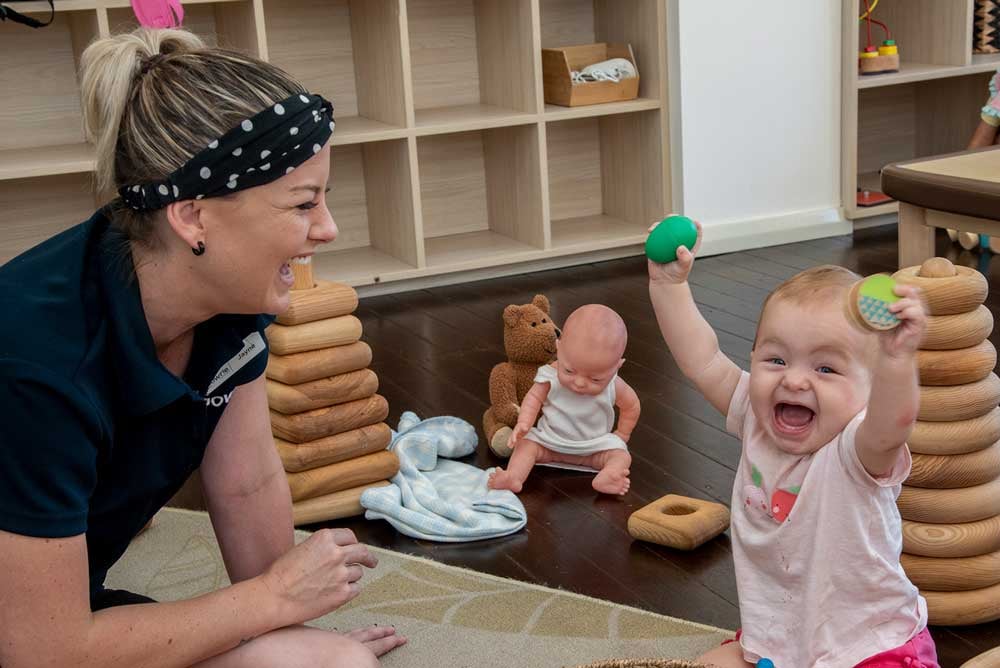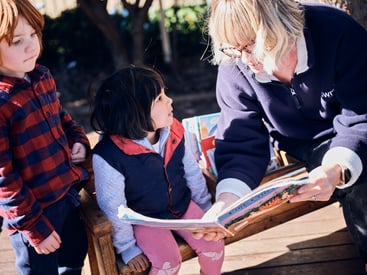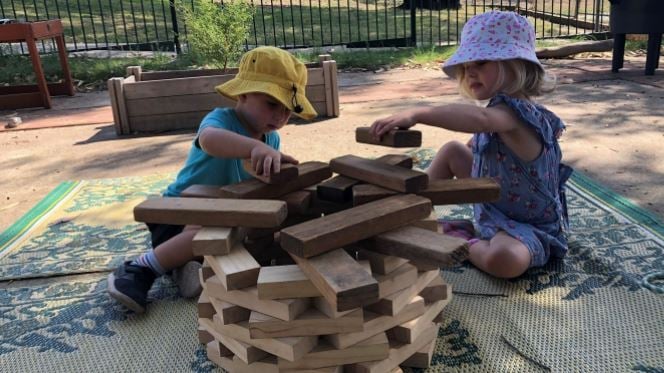Jean Piaget was born into a very different world than the one we live in today. At the time he started his work in the early 20th century, it was widely accepted that children were simply small adults. The mainstream thinking of the time was that children's thinking followed much the same pattern as adults.
Today we know that not to be true. And that's largely thanks to Jean Piaget, the Swiss Developmental Psychologist. Jean Piaget's theory has been highly influential in how we understand children's development and the ways in which they learn.
Modern psychological thinking has evolved beyond that proposed by Piaget, but it is still relevant to how we approach children's learning and development.
What is Piaget's Theory?
Published in 1936, the theory developed by Piaget was quite revolutionary for the time.
At its most basic, the theory recognises that a child's intelligence develops in stages. These stages are universal to all children and always occur in the same order.
Piaget described children as "little scientists" who actively learn by observing and interacting with the world around them. This was contrary to the popular thinking of the time that viewed children as "empty vessels to be filled with knowledge."
As a psychological constructivist, Piaget was not only interested in how child development and learning. He was also interested in the way they construct their understanding of the world.
Piaget believed that children are always reflecting on their experiences to gain new knowledge. More than this, he believed that the different stages of his theory were effectively stairs or building blocks. According to Piaget, as children have different experiences, they build on prior knowledge and their ideas evolve.
Do you want to be part of making a direct and meaningful impact on children and the wider society?

How Piaget Developed His Theory
Piaget was working as an assistant to Alfred Binet and Simon Theodore, the creators of the first widely used IQ test. Through his work on standardising the test, Piaget noticed a pattern in how children of similar ages mostly answered the same questions incorrectly. This sparked his interest in what would go on to become his life's work.
In developing his theory, Piaget studied children from infants through to teenagers. He observed them and also conducted clinical interviews with older children to gather his findings. Through his interviews and observations, Piaget documented the different stages and components of children's cognitive development.
The Three Components of Piaget’s Theory of Cognitive Development
The theory formulated by Piaget is made up of three different components:
- Schemas
- The three processes of adaptation
- The four stages of cognitive development
They each help to explain children's cognitive development and the way in which they construct their understanding of the world.
Schemas
One way to think of a schema is as a building block. They provide a structure by which we can understand and interpret the world and the experiences we have. We can have schemas related to objects, people, events, social situations and even ourselves.
Piaget believed that schemas are important in the process of cognitive development. As children have an experience, they develop a schema to explain it and organise it within their brain. The more experiences have, the more complex and numerous their schemas become. But also, they use the new experiences to adapt and modify their existing schemas.
Because schemas are based on experiences, the schema of an infant will be vastly different from the schema of a 10-year-old. Over time, children build connections between their schemas, ultimately shaping how they view the world.
Examples of schema
Consider your child's first experiences with going to the doctor. Many of their first visits involved getting their immunisations. As they build their schema around a visit to the doctor, they associate it with getting a needle. And getting needles hurts. No wonder so many kids are afraid of going to the doctor!
Or what about giving and receiving presents? Say it's your child's first birthday. They need some help and encouragement to open the presents because they don't really know what this whole present thing is about. Then they go to other birthday parties and start to piece it all together. Their schema builds so they know that when it's a friend's birthday, they need to buy a gift to give them.
What about all that time you spend teaching your child that a cow says moo? They see a horse and start mooing because the horse fits their schema of what a cow looks like. Then they start to organise their schema of different animals so they can differentiate between a horse and a cow, a sheep and a dog.
The Process of Adaptation
Piaget argued that cognitive and intellectual development happens through a process of adaptation. That is, children learn by adjusting to the world. They do this through assimilation, accommodation and equilibration.
Assimilation
Assimilation is where a child applies an existing scheme to a new experience or object. For example, in the case of the horse/cow confusion. The child knows that cows are furry, they stand on four legs and they live on farms. They see a horse and it ticks all the boxes.
The child is making sense of what they are seeing by organising it in a pre-existing category, or schema, in their brain.
Accommodations
Where an existing schema doesn't fit the situation or experience, the child needs to take a different approach. This is called accommodation. For example, they may see a chicken on a farm. It's much smaller than a cow and only walks on two legs.
They need to change their schema to explain this new winged creature that's covered in feathers. All of a sudden their animal schema is expanded.
Equilibration
Piaget believed that through assimilation, children find order in the world. When they can use their existing schemas to organise new information, they are in equilibrium.
However, when the new information can't be organised into an existing schema, they find themselves in disequilibrium. According to Piaget, this sense of disequilibrium is unpleasant and uncomfortable because humans naturally seek order in their thinking.
Equilibration is how children move their development forward through the accommodation of new knowledge and experiences.
For example, to ultimately progress to the next stage of their development, the child who thought the horse was a cow will need to accommodate that information to adjust their schema.
Equilibration is essentially a balance between assimilation and accommodation.
Have you ever contemplated embarking on a career in early childhood education?
The Stages of Cognitive Development
Piaget grouped cognitive development into four stages. Piaget's stages are like steps, each building on the one before it, helping children to build their understanding of the world.
The four stages are:
- Sensorimotor: birth to 2 years
- Preoperational: ages 2 to 7
- Concrete operational: ages 7 to 11
- Formal operational: ages 12 and up
Sensorimotor Stage
 A lot happens during the first two years of a child's life. They're growing, learning, developing and discovering every day. Piaget observed that in this period, what he calls the sensorimotor stage, young infants use their senses (touch, sight and sound) and movements to learn about the world.
A lot happens during the first two years of a child's life. They're growing, learning, developing and discovering every day. Piaget observed that in this period, what he calls the sensorimotor stage, young infants use their senses (touch, sight and sound) and movements to learn about the world.
It might seem like they want to put everything in their mouth - their hands, toys, the cats tail - but that's because this is how they learn.
One of the key milestones in this stage is object permanence. This is a key shift in development where infants learn that an object still exists, even if they can't see it. If you hide a toy from an infant who understands object permanence (usually from the age of about 8 months), they will look for the toy.
Preoperational Stage
During this stage of development, children's behaviour is very egocentric. That is, they have difficulty in seeing things from other people's perspectives. They also think in very concrete terms, although language development is a major milestone in the preoperational stage.
Logic is not a hallmark associated with preoperational children. Children build on the concept of object permanence and abstract thinking. They may have a tendency to think that their toys have feelings, also known as animism.
A characteristic of the preoperational stage is dramatic and imaginative play. Piaget thought that this type of play was very beneficial to children in this stage. Through imaginative play, preoperational children can engage in early metacognition, i.e. thinking about thinking.
Concrete operational stage
Logic enters the scene in the concrete operational stage as children start to organise their thinking. They are less egocentric and they have an awareness of their own unique thoughts and feelings. While children in this stage of middle childhood development do have some degree of flexibility in their thinking, they do find abstract concepts challenging.
At this stage, children can understand the concept of conservation. That is, an object can change appearance but still remain the same. This is linked to concepts of mass, weight and volume.
There are two other characteristics of the concrete operational stage. The first is reversibility - the ability to retell an experience out of the order it happened. The second is decentering - the ability to consider problems or situations from different angles.
Formal operational stage
The final stage Piaget identified is characterised by abstract thinking and the ability to deal with hypothetical concepts. Adolescents at the formal operational stage think more scientifically and their ability to apply logical thinking is much more sophisticated than at any other stage.
Interestingly, Piaget explained intellectual development as a qualitative change. It's not just that a child in the formal operational stage knows more than a child in another stage. What is different is how they think about the world around them.
As children enter secondary school and adulthood, this type of thinking allows them to theorise about the world.
The Differences Between Piaget Theory and Others
The theory that Piaget put forward marked a significant shift in the way society studied and understood child cognitive development. But the theory differs from others in several ways.
Comparing Theories: Piaget vs Vygotsky
Vygotsky's theory, developed by Russian Psychologist Lev Vygotsky, views children's learning more through a social lens. Vygotsky believed that interactions with peers and adults are central to how children develop and learn. This is contrary to Piaget's view that children learn through their own independent experiences and explorations.
Both Piaget and Vygotsky saw children as actively engaged in their own learning. They were also both interested in the role of language in a child's cognitive development. Beyond this, their theories differ.
Unlike the stages Piaget suggested, Vygotsky's theory doesn't have stages. Vygotsky also places much greater emphasis on teachers as mentors and guides through education and development.
In truth, both theories are used today to inform pedagogical approaches and thinking.
How to Use Piaget's Stages of Development
In early childhood education, we used play-based learning to give children opportunities and experiences to learn. We encourage trial and error through experimentation and exploration. We cater to children at whatever level they are at and let them guide the learning and play.
experiences to learn. We encourage trial and error through experimentation and exploration. We cater to children at whatever level they are at and let them guide the learning and play.
This approach is informed by Piaget's theory of cognitive development. While Piaget's thinking isn't the only theory we use to define what we do, it does play an important role in helping us understand the capability of the young children in our care.
You will notice that Piaget's stages of development are consistent with the general types of play you might see in our early education centres.
At the sensorimotor stage, we allow infants to explore through their senses. Sensory play is important for these younger children as well as using real objects and toys to help them develop an understanding of object permanence.
For preoperational children, we encourage imaginative play and give them opportunities to engage with many concrete events and objects such as books and games. We create space for the children to come up with their own ideas and support them as they question the world around them.
By the concrete operation and formal operational stages, children are at big school. You might notice that their thought processes involve more analytical thinking and scientific reasoning. At this stage, children begin to engage with abstract ideas and hypothetical situations.
Care and development at Gowrie NSW
At Gowrie NSW we are focused on providing exceptional care for your children. Our pedagogy is informed by leading thinkers and theories in child cognitive development so we can provide a nurturing environment to foster the potential of every child.
With over 30 locations throughout the Sydney metropolitan, greater Sydney and regional NSW, including Canberra ACT, this could be your first step or next step in your childhood career journey.
Learn more about how we encourage wonder, experimentation and play at our centres across NSW and ACT.








